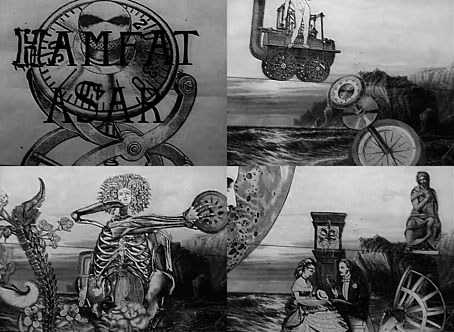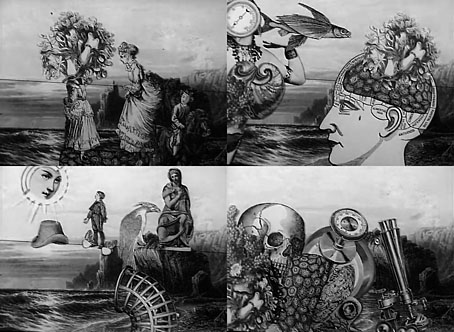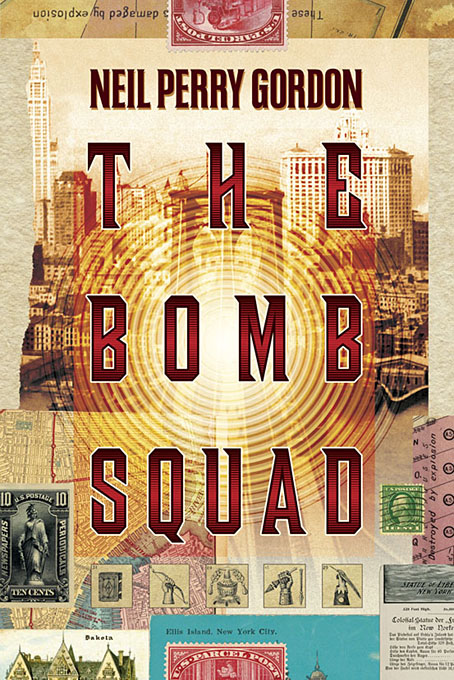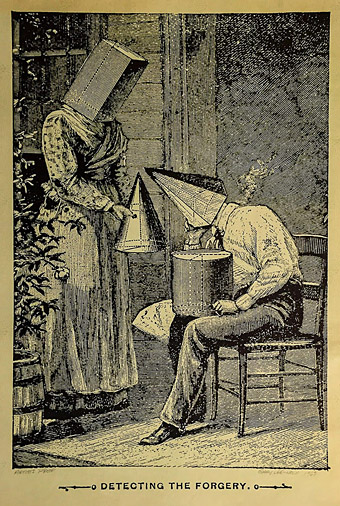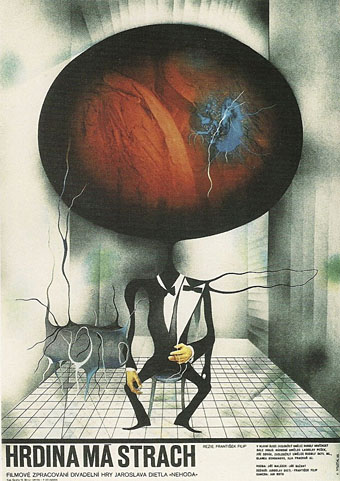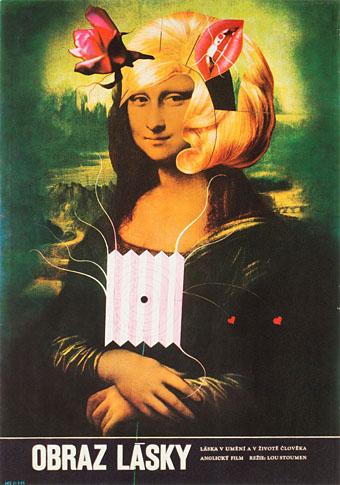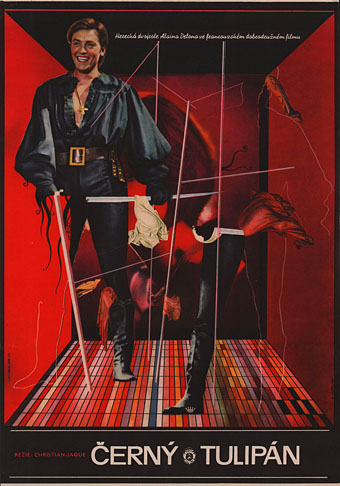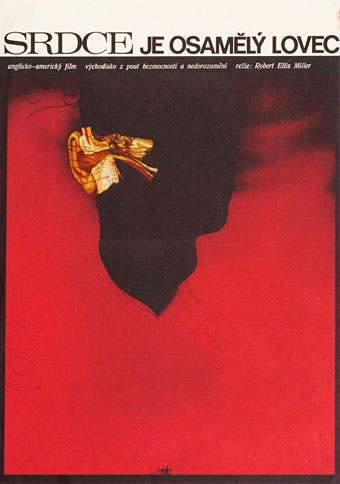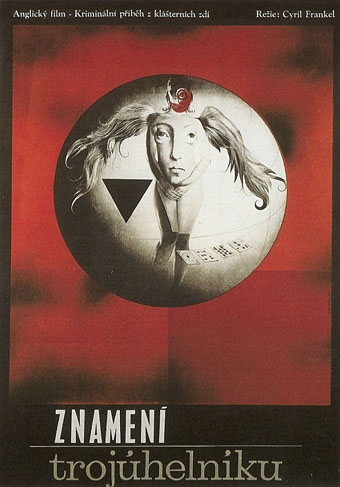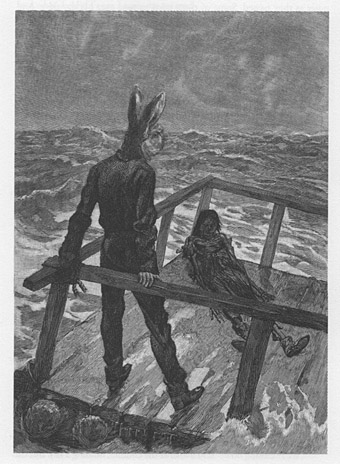I was reminded of Lawrence/Larry Jordan recently when reading Deborah Solomon’s biography of Joseph Cornell, Utopia Parkway, in which Jordan receives passing mention for helping Cornell with some of his film work in the 1960s. One of Jordan’s short films was featured here in 2014 but I’d not been very diligent in looking for more, a considerable oversight when he was an early and accomplished practitioner of animation using collaged engravings and illustrations. He wasn’t the only animator producing work like this in the 1960s, Harry Smith, Jan Lenica and Walerian Borowczyk also used these methods, but Jordan seemed to favour the idiom more than others.
Hamfat Asar dates from 1965, and is immediately notable for moving its collaged figures over a shoreline landscape which remains fixed for the entire running time. The narrative, such as it is, concerns a stilt-walking figure attempting to cross from one side of the screen to the other but whose progress is continually impeded by a succession of figures, creatures and bizarre assemblages. The film has been described as representing “a vision of life beyond death” although this isn’t very evident at all. Jordan’s films are much more Surreal in the true sense of the word than many other collage animations which tend towards satire or comedy, Terry Gilliam’s work for Monty Python being an obvious example of the latter. The combination of Surreal engravings with black-and-white film stock gives Hamfat Asar a distinct Max Ernst flavour, which is no bad thing. Watch it here.
Previously on { feuilleton }
• Carabosse, a film by Lawrence Jordan
• Labirynt by Jan Lenica
• Science Friction by Stan VanDerBeek
• Heaven and Earth Magic by Harry Smith
• Short films by Walerian Borowczyk

